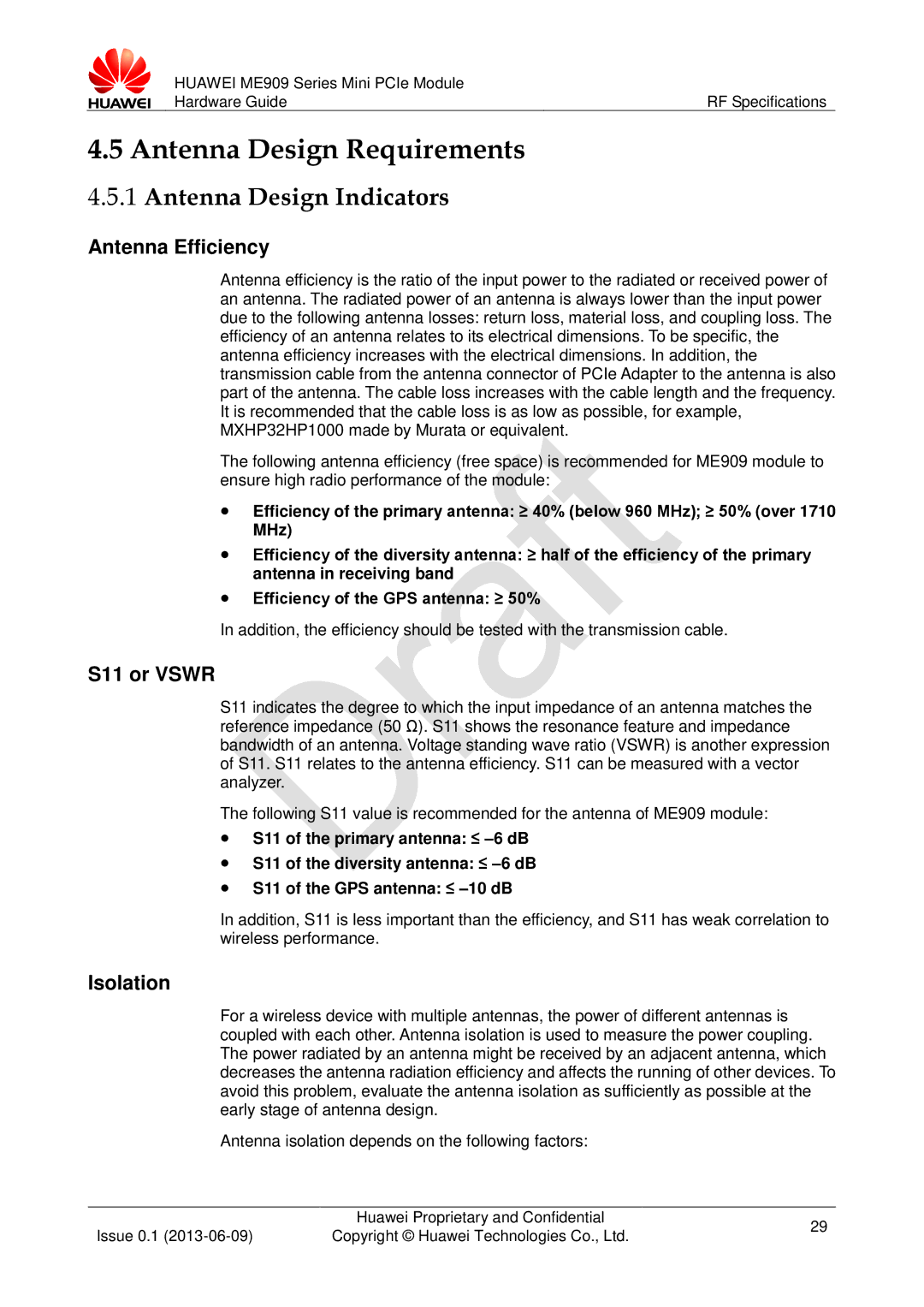
HUAWEI ME909 Series Mini PCIe Module |
|
Hardware Guide | RF Specifications |
4.5 Antenna Design Requirements
4.5.1Antenna Design Indicators
Antenna Efficiency
Antenna efficiency is the ratio of the input power to the radiated or received power of an antenna. The radiated power of an antenna is always lower than the input power due to the following antenna losses: return loss, material loss, and coupling loss. The efficiency of an antenna relates to its electrical dimensions. To be specific, the antenna efficiency increases with the electrical dimensions. In addition, the transmission cable from the antenna connector of PCIe Adapter to the antenna is also part of the antenna. The cable loss increases with the cable length and the frequency. It is recommended that the cable loss is as low as possible, for example, MXHP32HP1000 made by Murata or equivalent.
The following antenna efficiency (free space) is recommended for ME909 module to ensure high radio performance of the module:
Efficiency of the primary antenna: ≥ 40% (below 960 MHz); ≥ 50% (over 1710 MHz)
Efficiency of the diversity antenna: ≥ half of the efficiency of the primary antenna in receiving band
Efficiency of the GPS antenna: ≥ 50%
In addition, the efficiency should be tested with the transmission cable.
S11 or VSWR
S11 indicates the degree to which the input impedance of an antenna matches the reference impedance (50 Ω). S11 shows the resonance feature and impedance bandwidth of an antenna. Voltage standing wave ratio (VSWR) is another expression of S11. S11 relates to the antenna efficiency. S11 can be measured with a vector analyzer.
The following S11 value is recommended for the antenna of ME909 module:
S11 of the primary antenna: ≤
S11 of the diversity antenna: ≤
S11 of the GPS antenna: ≤
In addition, S11 is less important than the efficiency, and S11 has weak correlation to wireless performance.
Isolation
For a wireless device with multiple antennas, the power of different antennas is coupled with each other. Antenna isolation is used to measure the power coupling. The power radiated by an antenna might be received by an adjacent antenna, which decreases the antenna radiation efficiency and affects the running of other devices. To avoid this problem, evaluate the antenna isolation as sufficiently as possible at the early stage of antenna design.
Antenna isolation depends on the following factors:
| Huawei Proprietary and Confidential | 29 | |
Issue 0.1 | Copyright © Huawei Technologies Co., Ltd. | ||
|
